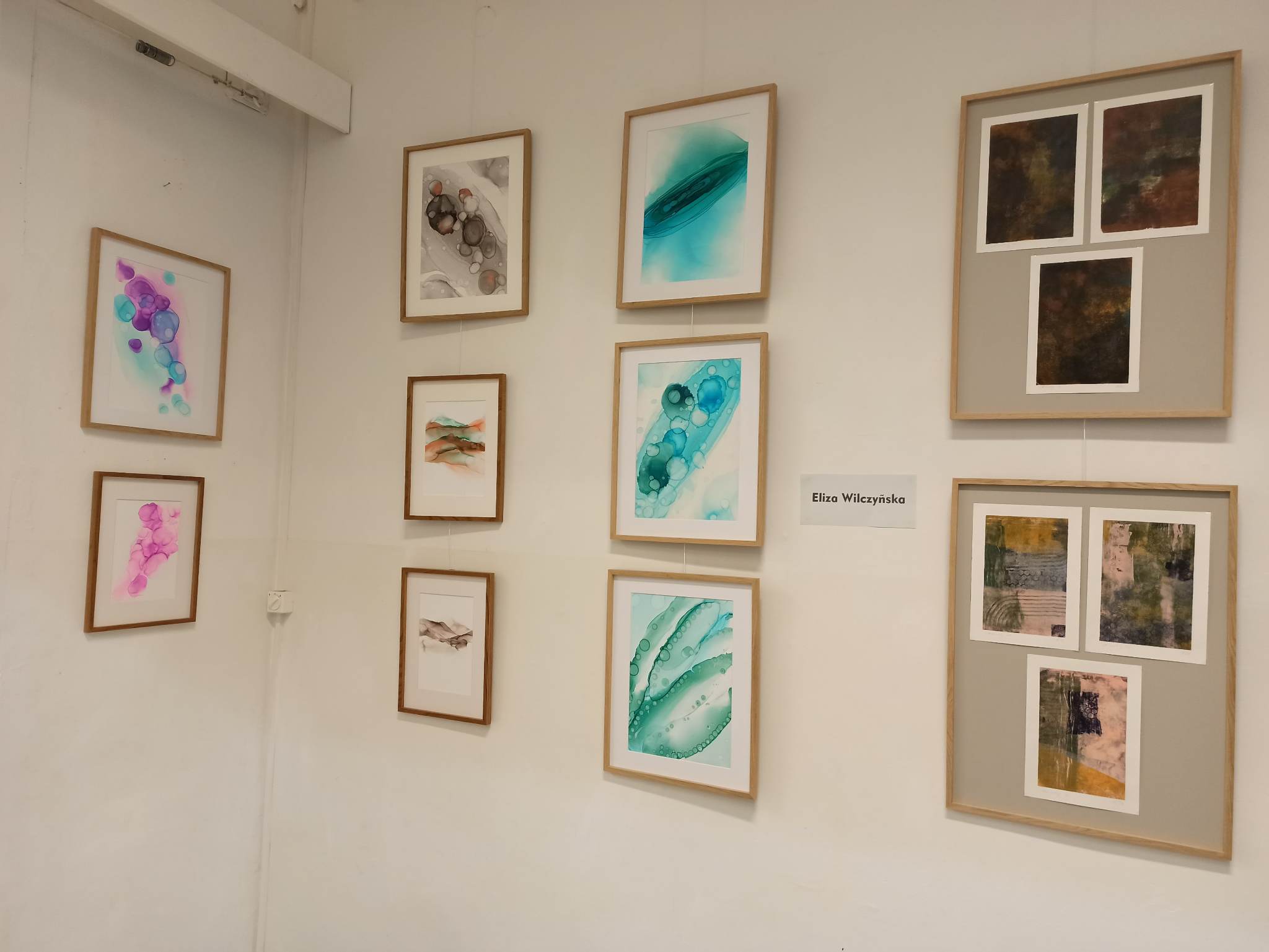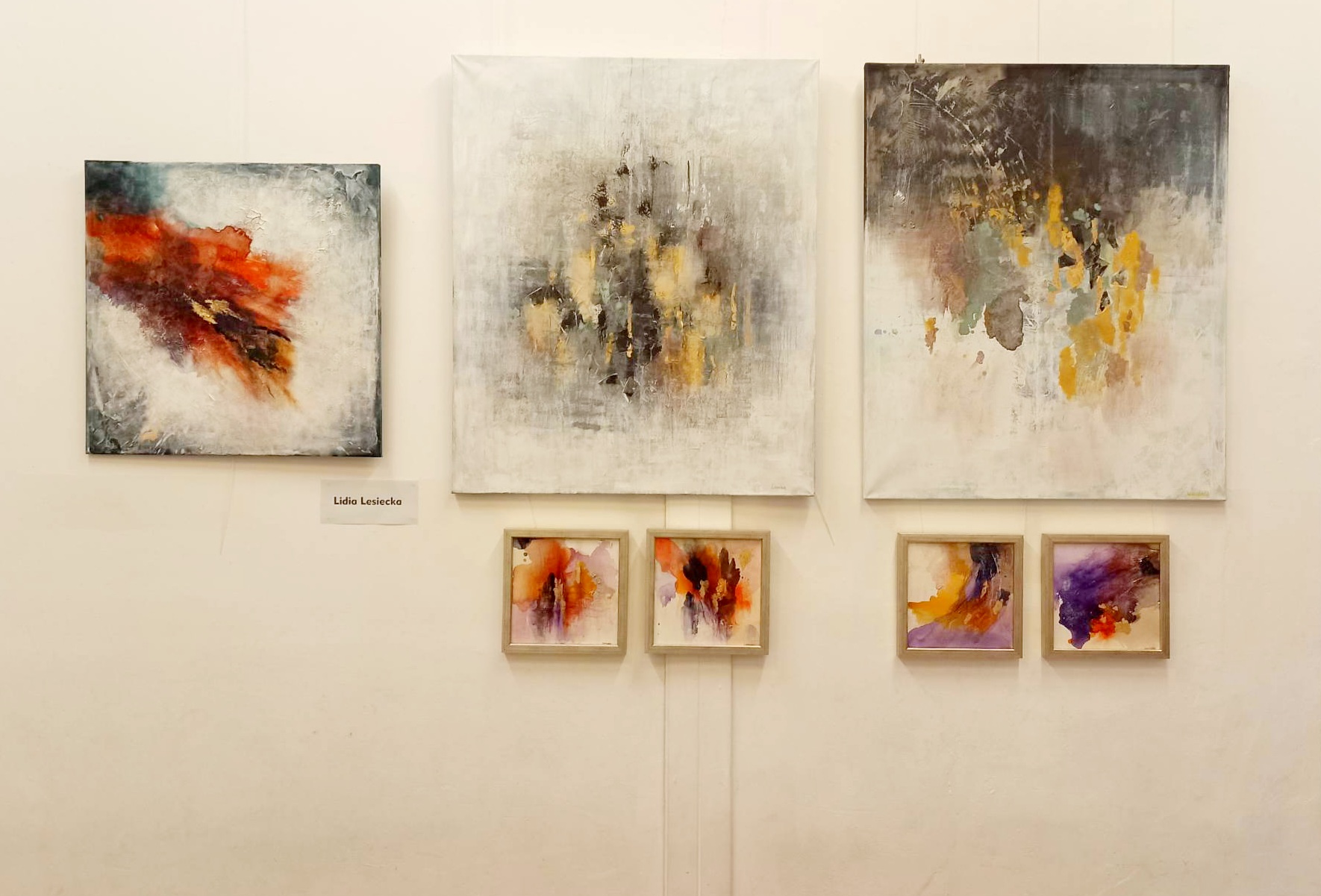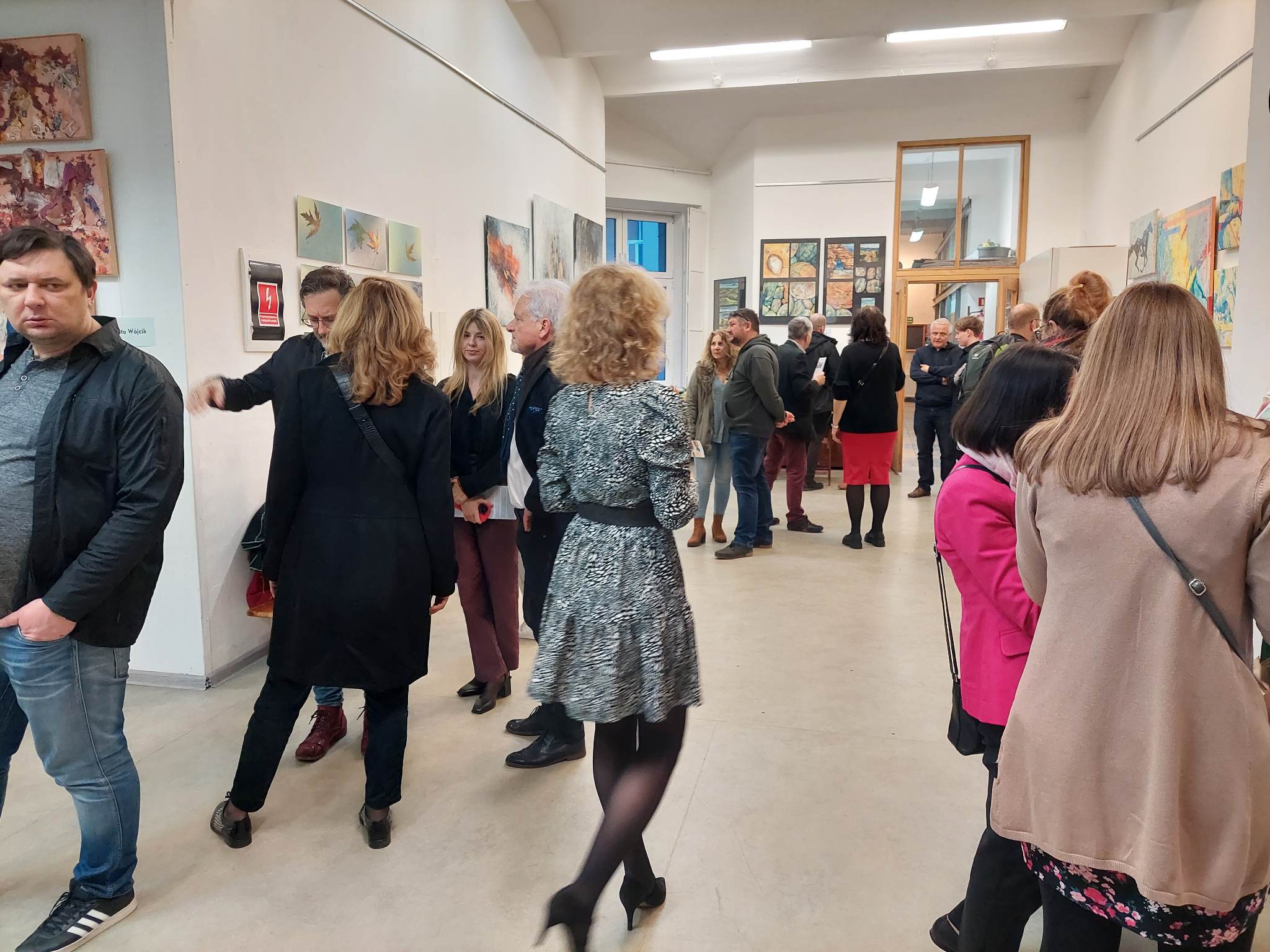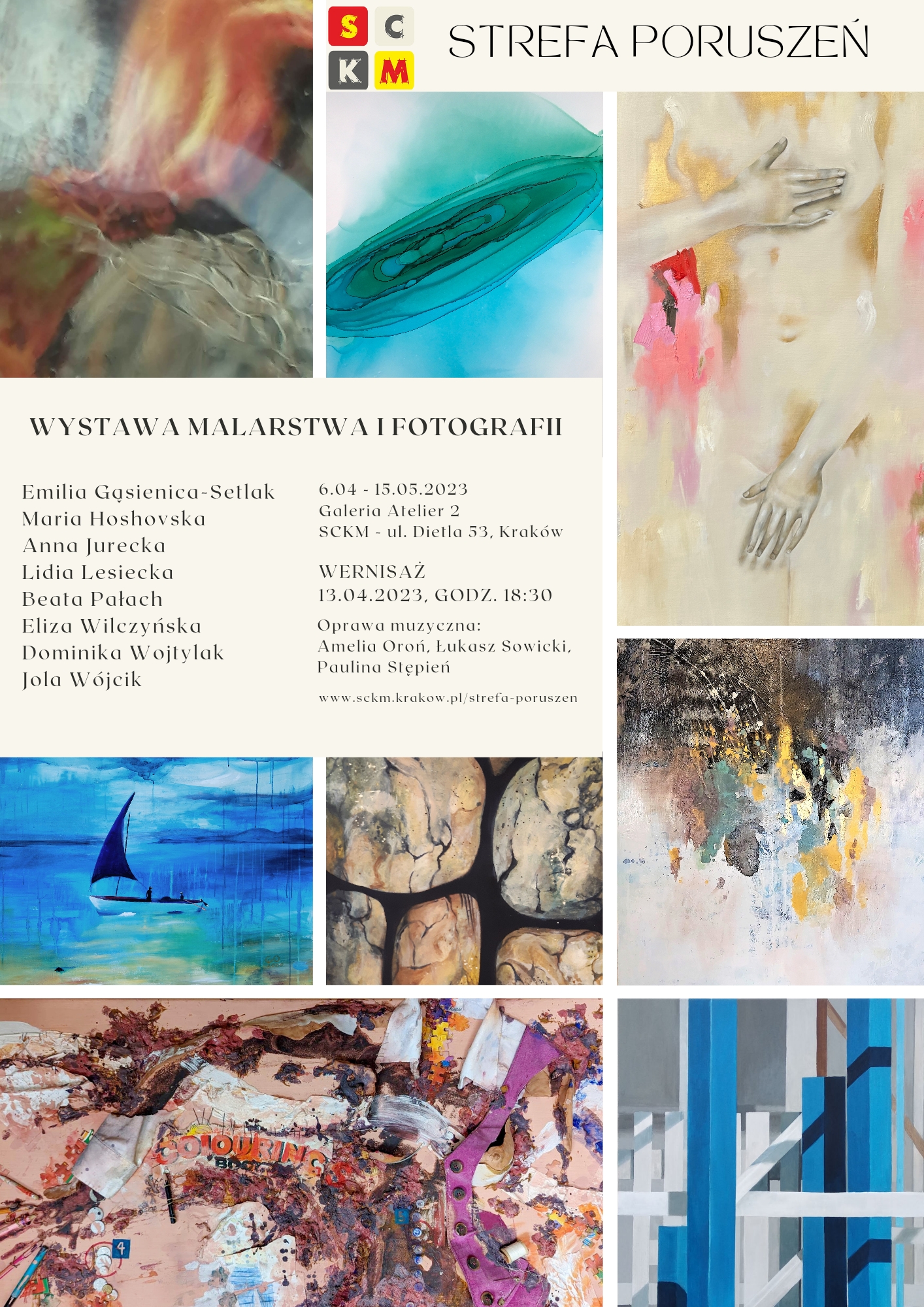Zone of Movements
Group exhibition
Atelier 2
Kraków
IV - V 2023
A group of eight artists invites you to a new exhibition at the Atelier 2 Gallery entitled “Zone of Movements”: Emilia Gąsienica-Setlak, Maria Hoshovska, Anna Jurecka, Lidia Lesiecka, Eliza Wilczyńska, Dominika Wojtylak, Jola Wójcik and Beata Pałach-Milligan – who was the originator and the godmother of this show. All participants in the exhibition are young, full of energy and ideas. They are connected by friendship and common views on the world and art, and a meeting with their work will be a pleasure for those who appreciate imaginativeness and improvisation in art, supported by careful observation and a reliable workshop. It is not a review exhibition, summarizing their achievements as broadly as possible; these are rather fragments, clippings of their work. But a joint exhibition is certainly an artistic adventure and an interesting experience. Viewers will be able to confront different styles, techniques, and formats; compare oil paintings, watercolors, collage, and photographs. And the task is not easy because each of the participants of the exhibition presents a different, characteristic direction, creating highly individualized works that emphasize their personalities.
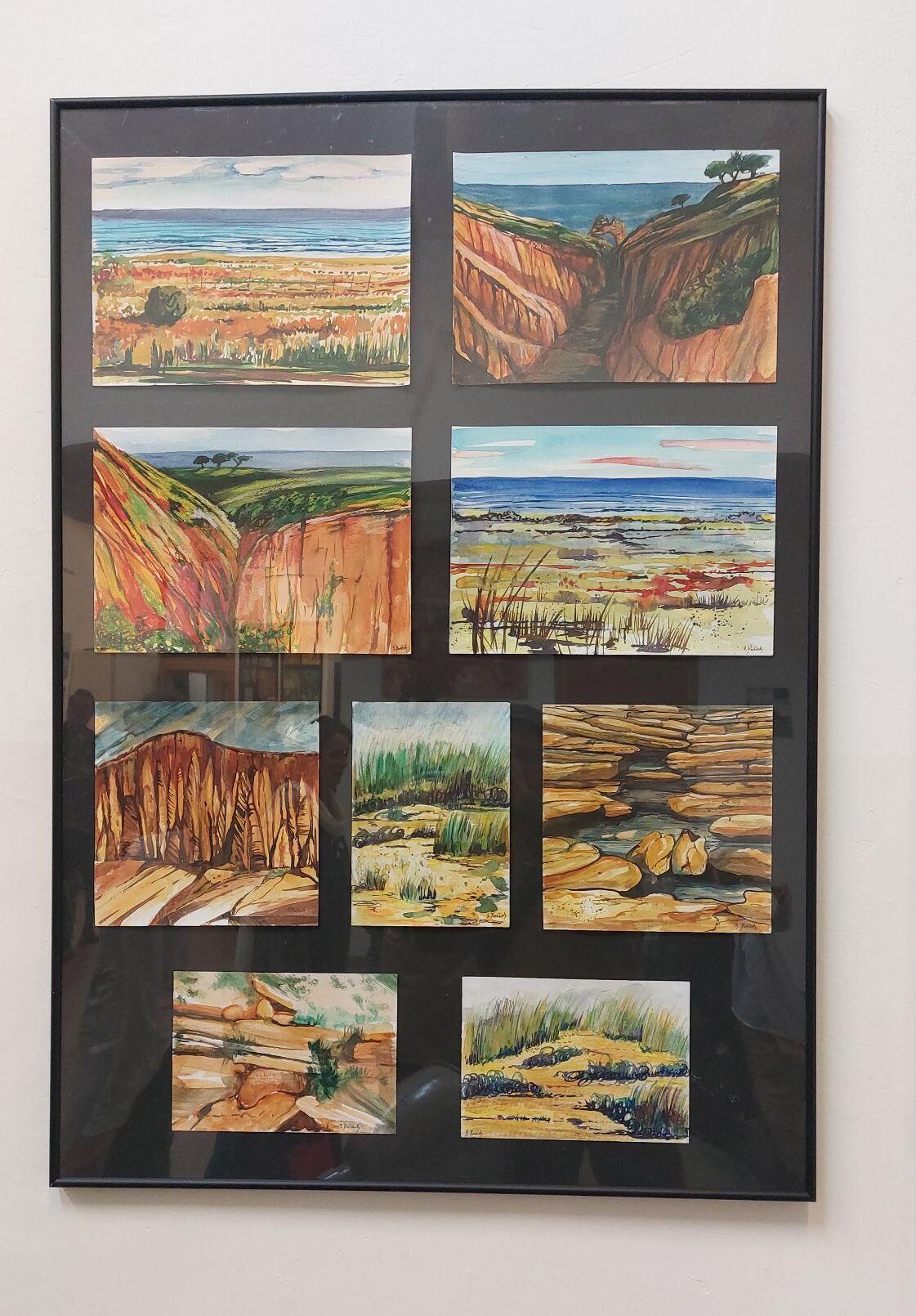
And so, Beata Pałach, still faithful to watercolour, this time presents sensual landscapes inspired by the beauty of south Portugal. Red browns and honey ocher mixed with green grass and sea blue are a kind of epicurean praise of nature, attention to its richness and diversity. A separate chapter is a series of stones. These “Conversations with Stone,” as in Szymborska’s poem, should be treated as a continuous attempt to cross the border of knowledge and look under the sheath of matter.
Maria Hoshovska’s paintings praise beauty, albeit of a different kind. It is an affirmation of the art of the old masters and the female body. Maria looks for inspiration in ancient or Renaissance sculptures to reflect the spirit of the era in her own way, to face the power of tradition, discovering hidden meanings and new meanings in classical compositions. At the same time, the artist combines her formal sculpting education with her passion for painting.
A very broad view of the world is presented by Emilia Gąsienica – Setlak. Her paintings lead us into the depths of hidden desires and emotions, enlivening the world through metaphor and generalization. Once the artist paints silhouettes of animals or insects filled with a decorative pattern, and the scaling of the drawing and juicy colors suggest a pop-art origin. At other times, the painter reaches for topics charged with eroticism, related to the eternal game between a man and a woman. Half-provocative, avoiding aesthetic correctness, they are a kind of rebellion against easily understood tradition.
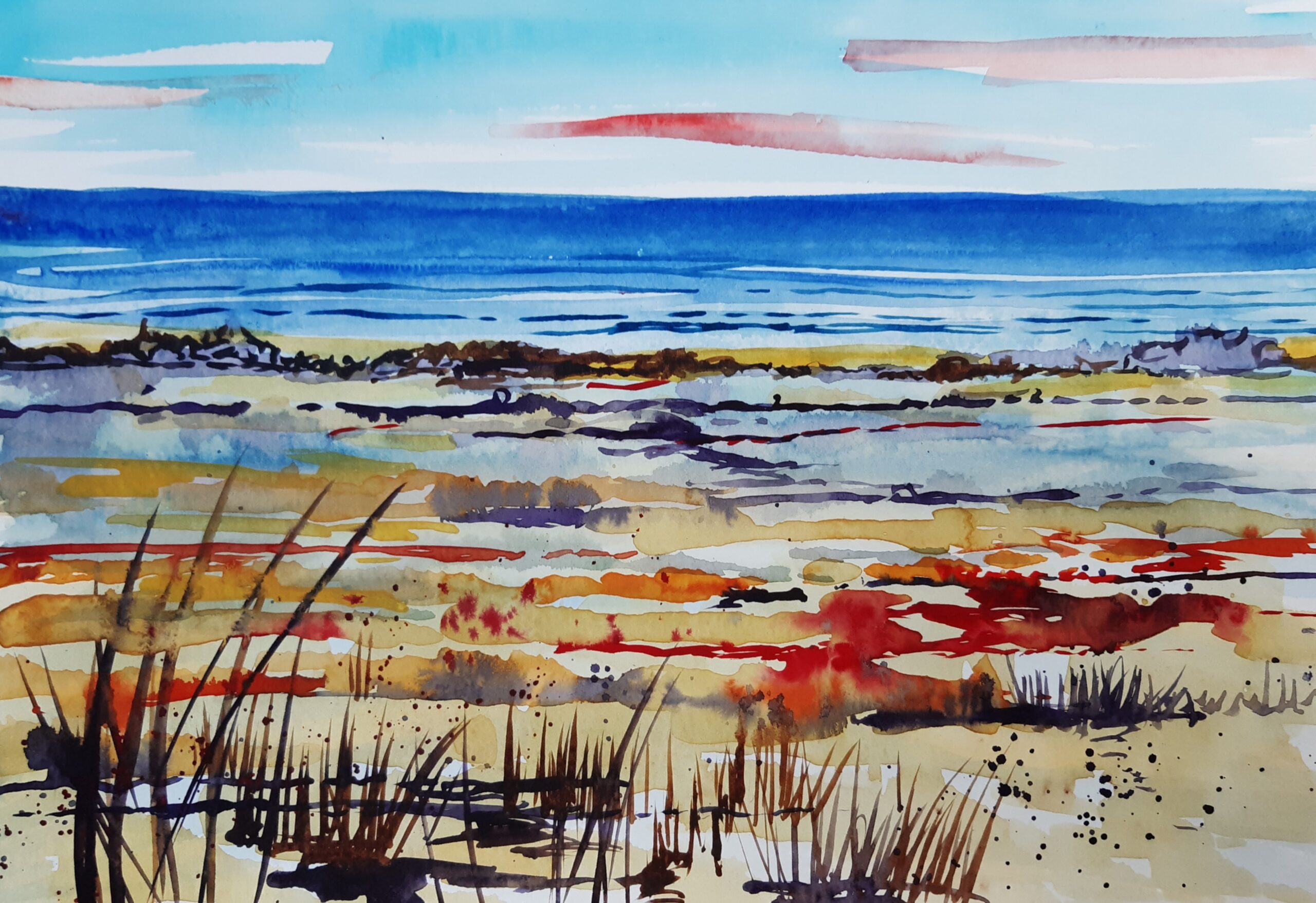
Lidia Lesiecka, on the other hand, presents informal painting, inscribing itself within the broadly understood expressionist abstraction, allowing for chance and the one-off nature of the act of creation. With all the musical feeling, improvisation, and spontaneity of the gesture, Lidia’s paintings have a sophisticated tone based on shades of violets, yellows, and oranges, as well as an interesting texture contrast.
Meanwhile, Dominika Wojtylak’s compositions successfully balance between abstraction and representational art. Tightly framed, rhythmic divisions resemble fragments of scaffolding, constructions consisting of some kind of shuttering boards and steel tees. A tangle of architectural rhythms, facades with rows of their shadows, restless slants of perspectives, changeability of wall planes give the paintings an intriguing dimension of some surreal tangle. In addition, the bright, white and blue tones of the paintings are intriguing, because we cannot see the real scale of the building and the purpose of this specific anti-nature.
Jola Wójcik’s triptych is restless in its aesthetic dimension, emanating emotions and power of expression. A collage with bas-relief elements made of materials such as sand, clay, scraps of clothes, fragments of toys and other personal items to create a human figure. Is this a metaphor of human fate? Is it an attempt to show fluidity, impermanence and existential anxiety in this impermanent world?
The works of Eliza Wilczyńska are as if at the other aesthetic pole. Incredibly clean, almost sterile watercolours thematically related to the elements, but shown on a pars pro toto basis. Thus, the painter does not evoke the vastness of nature or its destructive character, but we see the elements as drops of water, lumps of earth and colorful air bubbles. However, when the artist grabs a brush and acrylic paint, she can be expressive, tangible and rough; the images are then strongly unpigmented with quite dark tones.
And finally, photographs by Anna Jurecka, subtle, out of focus and therefore semi-abstract in their dimensions. One can clearly feel the distance, moderation and humility before nature. It’s such a nostalgic search for hidden beauty in the simplest frame, a leaf dipped in water or a tuft of dry grass. One of her photography cycles is entitled “Zone of Movements”, just like the current exhibition. Let us therefore finally give the floor to the author, who so subtly comments on the title of the exhibition: “We move the world of imagination just as art moves us. We consciously and subconsciously crush the superficiality of sensations and transform them into intimate, delicate confessions. We observe and transform. We move in the world looking for a “body”, not a cloak. And when we find a “body”, we are moved by its naked vulnerability, so we dress it with our emotions. The zones of movements are also zones of emotion, so it happens that we see the world from behind the veil of nostalgia or through the prism of fascination and appreciation of beauty. All this makes what you look at a world moved by the painter’s hand, the trembling of the lens and eyelids. The last phase of the transformation is a visible change of excitement and tenderness towards the world”.
Can this exhibition be treated as a manifesto of generational emancipation, or rather as an intimate artistic confession, full of concentration and contemplation? Let us leave these dilemmas to the viewers and art critics to solve. It is important that despite the different styles, techniques and formats, the exhibition is not chaotic, the works complement each other, creating an intriguing set. And finally, one more reflection and an open question: is it better for an artist to grow up in solitude, in being single, solitary, or rather among one’s own, in a community that combines similarities and sets common goals? It seems that the exchange of thoughts, confrontation of attitudes, confirming one’s presence in the environment, intellectual dialogue, mutual support and professional integration are very important, as evidenced by the present exhibition.
Michal Baca
The exhibition can be viewed from April 6 to May 15 at the Atelier2 Gallery in Krakow, at 53 Dietla Street, from Monday to Friday from 11.30 am to 6.00 pm.
